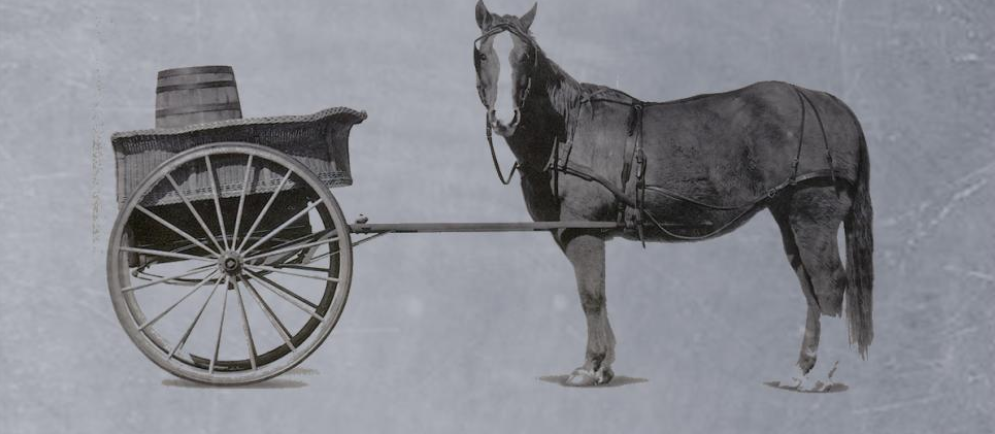An IIoT System: The Sum of Digital Parts
Key Takeaways
- An IIoT system is made up of several technology components, each responsible for achieving a different goal.
- There are, broadly speaking, five technology components of an IIoT system: connectivity & device management, data storage & governance, analytics, workflow & controls and infrastructure.
- Components should be deployed in the order that maximizes business value.
- Sustainable benefits of “IIoT” come once predictive actions or better informed decisions from analytics are made possible.
The Industrial Internet of Things (IIoT) is not one simple thing. It is a system of systems:
“A system of systems (SoS) brings together a set of systems for a task that none of the systems can accomplish on its own. Each constituent system keeps its own management, goals, and resources while coordinating within the SoS and adapting to meet SoS goals.”
Department of Defense, Systems Engineering Guide for Systems of Systems
If you are embarking on a digitalization journey, it is important to understand what the systems are that make up an IIoT solution so that you can focus your effort on the right pieces at the right time for your specific needs.
There is no single “right” time to deploy each component of an IIoT SoS. Given this ambiguity it is tempting to deploy the components in the order that data flows: collect → store → analyze → use. While this makes sense from an engineering perspective, we have found that this “technically correct” order frequently does not yield the best business results. Business value comes from solving real production problems. The insight needed to make better decisions comes from better analysis. Therefore, starting with analytics, understanding what really works and then putting in place the other capabilities needed to support these analyses is often a better approach. This intelligence-first approach leads to fewer high-cost infrastructure false starts and to a faster return on investment.
While by no means comprehensive, figure 1 presents a useful picture for orienting yourself to the pieces of an IIoT system. Below, we look at the major functions, some of the key terms associated with each function and why those functions are important.

Connectivity & device management
How the data is collected.
- What it does: Ensures that equipment can provide data (raw numbers and flags) to and receive actionable guidance (data that has been processed into some actionable form) from the rest of the IIoT system.
- Why is it important: Without data, nothing valuable happens. Getting data securely into the system from potentially large numbers of geographically distributed devices, provided by different vendors, manufactured at different times (many predating the modern internet), is a key step that does not scale well unless the right capabilities are put in place.
- Areas of concern:
- Data integrity – Is the data really what you think it should be?
- Network reliability and bandwidth – What is the cost and latency of getting the required data out from its sources to where it can be processed?
- Provisioning and updating devices – Can you connect and keep devices up to date at scale?
- Examples: Ignition Edge, PTC Kepware & ThingWorx Software Content Management (SCM), Softing dataFEED
Data storage & governance
How the data is managed.
- What it does: Holds data from equipment in such a way that it can be used to generate insights and support decision making tasks.
- Why is it important: The data needed to make decisions comes from a range of sources. Making this wide variety of real-time and historical data accessible and comprehensible to downstream applications becomes challenging as data volume and data variety grows. The right data storage, management and governance tools solve this problem and ensure that high quality analysis can occur.
- Areas of concern:
- Provenance & metadata – Is it clear where each data item came from and how to interpret it?
- Volume & retention – Can the system economically hold the right kinds of data for sufficient time to allow processing into useful insights?
- Access rights – Do only the right people have access to only the data they need? Are you in compliance with data protection policies?
- Data lakes, databases and data centralization – Are you confident that stored data is complete enough to be usable for generating insights today and tomorrow?
- Examples: Element Analytics AssetHub, Hitachi Lumada Data Services, InfluxDB, OSIsoft PI Data Archive & Asset Framework
Analytics
How insight is derived.
- What it does: Converts data into insight which can be used to make decisions.
- Why is it important: Most of the perceived benefit from IIoT comes from the predictive insights or better informed decisions that analytics allow users to make. There are a wide variety of approaches from those that provide basic rules, calculations and visualizations to custom, special purpose solutions meant to address industry vertical or equipment specific challenges.
- Areas of concern:
- Visualization vs guidance – Is it enough to just graph and filter the data for a human to interpret or is deeper, computational guidance needed?
- Description vs prediction – What kind of insights are needed? Is it enough to understand what has happened or do you need to prepare for what will happen next?
- Platform vs specialized – Are you trying to solve a specific problem or create a platform for solving any kind of problem?
- Skill requirements – Is the solution usable by the people who need to use it?
- Licensing – Does the software pricing scheme scale in a reasonable way with how broadly you will actually use it?
- Monitoring adoption and business impact – Can leadership easily tell if the analytics are being used and providing value as intended?
- Examples: Falkonry Clue, Tableau Server
Workflow & controls
How insight is used.
- What it does: Ensures that the right work is being done in the right way at the right time.
- Why is it important: Most manufacturing operations are too large to be managed through face-to-face interactions and informal work tracking. Workflow, asset and production management software work together to make sure that all the necessary actions are being taken in a safe and economical manner. As automation continues to progress, this function will continue to grow in importance. It will feed on analytical insights in order to make better, more timely decisions. Increased automation will also raise the importance of integrated systems. That is, of getting the insight reliably into the decision making process at the right time.
- Areas of concern:
- Workflow mapping – Is the full flow of information and decision hand-offs clear and consistent with the IIoT system being planned? Are there “shadow organizations,” humans using email and Excel in workflows where they’re not supposed to be? How will those people’s work be incorporated?
- Integration – How will all the pieces of the workflow exchange information? Who will do the work required to make robust and efficient connections?
- Notifications – Are alerts being pushed to all the right places in a timely manner?
- Silos & duplication – Are cross divisional, organizational structures consistent with the IIoT system being planned?
- Examples: IBM Maximo, SAP EAM, Siemens Camstar MES
Infrastructure
Where software runs.
- What it does: Provides the computing, memory, disk storage and networking capacity needed for the software systems to do their job.
- Why is it important: None of the other parts of an IIoT system can function without physical computers, routers and storage systems. The cost, performance and scalability of any solution ultimately depends on getting the right sizes of the right hardware installed in a way that can be maintained within the IT team’s operating plan.
- Areas of concern:
- Cloud, hybrid cloud and on-prem – Which model is best for your near and long term cost structure, security stance and technical needs? How will you deal with the need for burst capacity?
- Edge computing – Do you have latency, reliability, protocol translation or network cost constraints which demand local computing solutions? Is ruggedized hardware required?
- Performance and accelerators – Will the hardware support the computational, bandwidth and memory needs of the current and future applications? If you expect a heavy machine learning element to your analytics, do you have capacity for the right kinds of accelerator cards?
- Examples: Amazon Web Services, Cisco, Dell EMC, Microsoft Azure
With those pieces in mind, hopefully you’re better able to pinpoint the areas of your digitalization project which are most important to achieving your business objectives or which need the most urgent attention. Based on our years of experience with over 60 customers across more than 12 industries, we believe that the shortest path to achieving value is directly through a production pilot. Contact us and we can help you get started with the right pieces for an Intelligence-first journey to operational excellence





